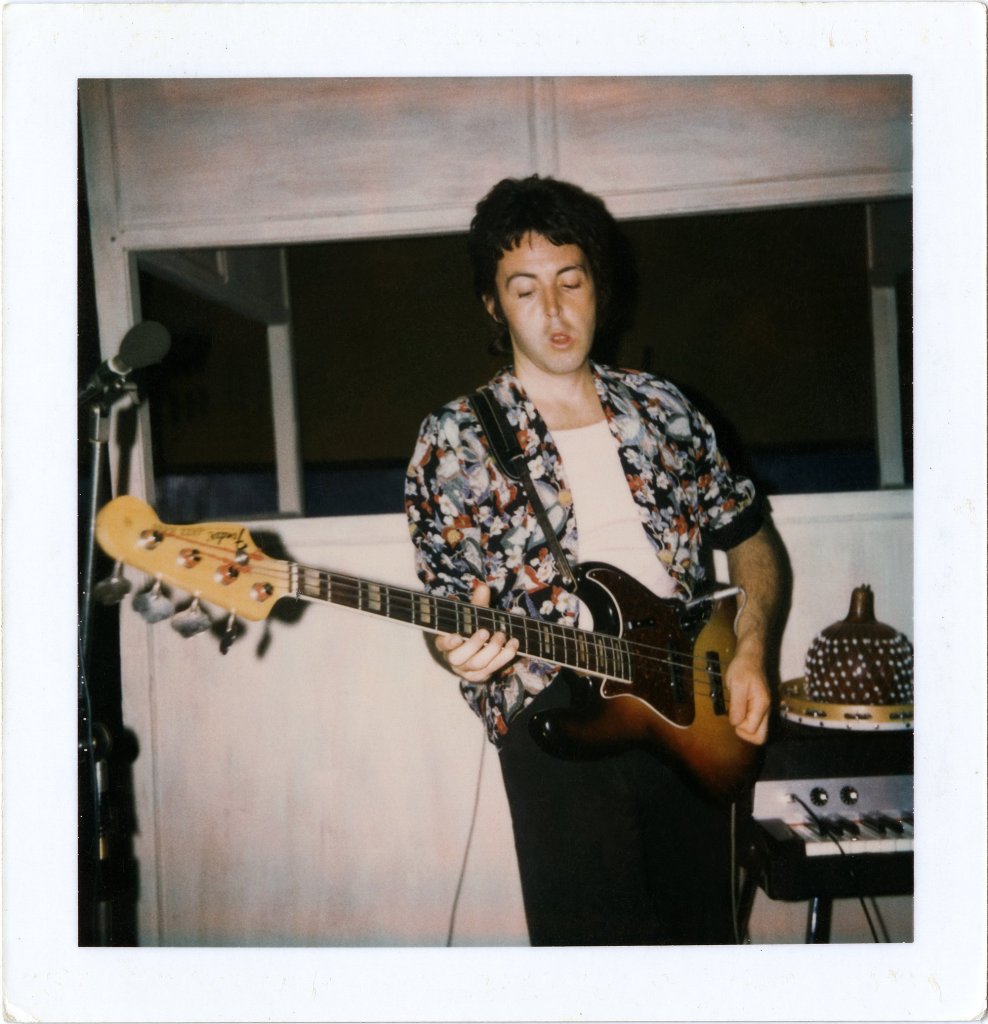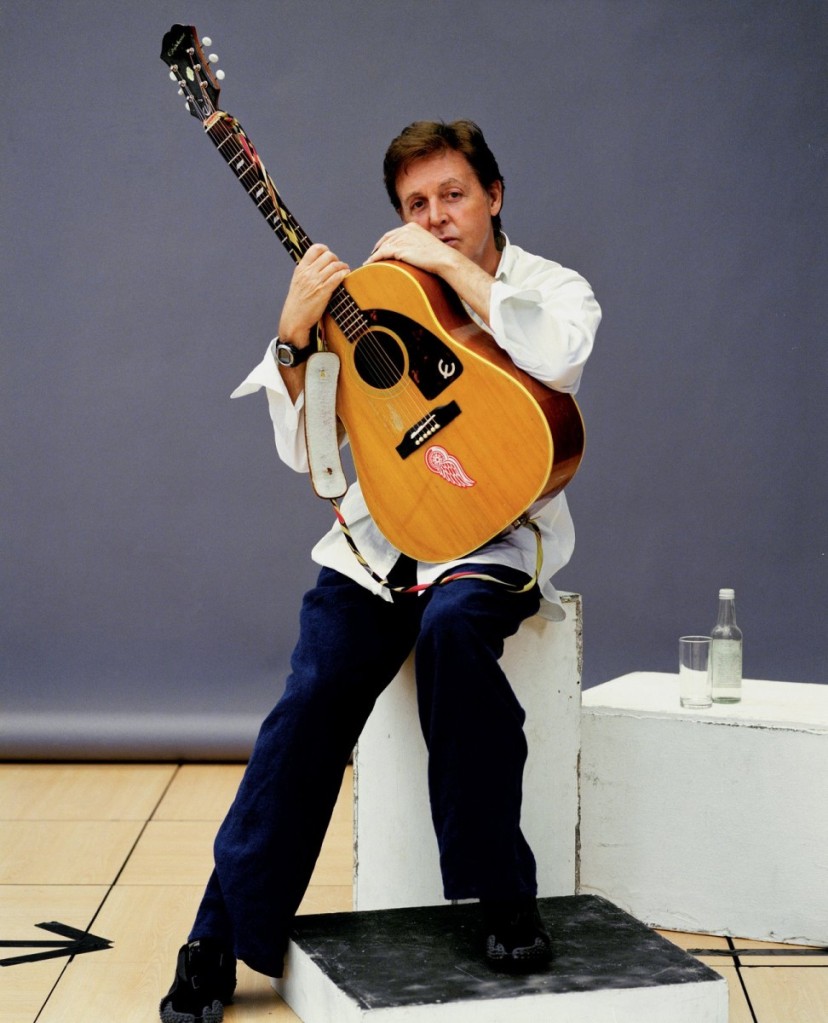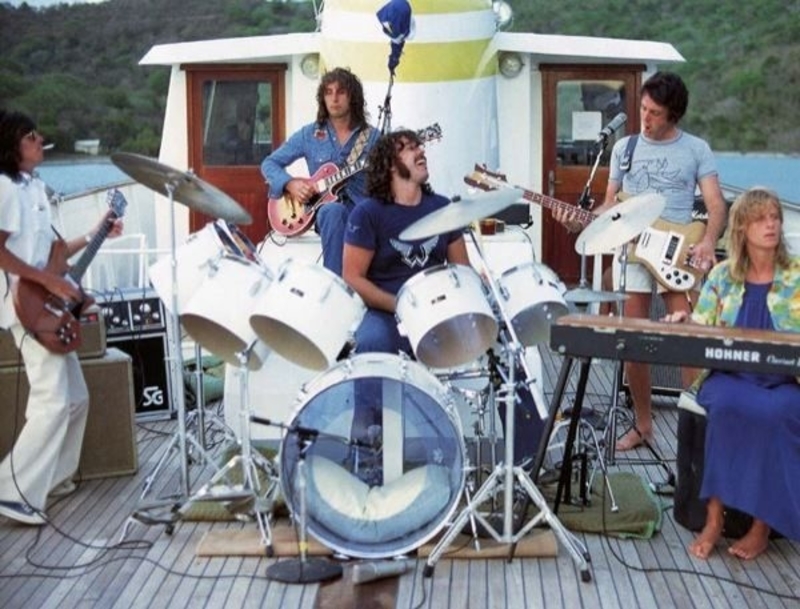So last time out I listed 40 examples of McCartney genius across his career and, to mark his 80th birthday, here are another 40 more. I must admit, once you start looking at this kind of stuff it is a little bit like going down a rabbit hole. You start to think: “But what about that bit? Or that little section there?” And unpicking some constituent parts of songs I guess kind of misses the point, because it’s how he weaves them all together to form a magnificent whole which is perhaps his greatest talent of all. He sees – or rather, hears – the big picture, in a way so few people can. Nonetheless, here are some more vignettes and little details which, for me, help to illustrate why he’s the best.
Again, they’re in no particular order, and don’t necessarily reflect his very finest songs. They’re just moments which always make me go “Wow!” So happy birthday, Macca. Let’s hope there are a few more of these still to come.
41. The way he growls “Eat like a hunger” on ‘Oo You’ (McCartney, 1970). Definitely got something on his mind about Linda there…
42. The synthesiser lines which come out of nowhere and illuminate the closing passage of ‘Mamunia’ (Band on the Run, 1973).

43. His stinging guitar solo (not to mention his astonishing bass playing) in ‘Taxman’ (Revolver, 1966), adding even more bite to the song.
44. The beckoning “Well well, oh yeah” intro which draws you into ‘Tiny Bubble’ (Driving Rain, 2001), the aural equivalent of easing into a warm bath. And the song delivers on its promise.
45. The line “Like gravy, down to the last drop/I keep mopping her up” in ‘She’s My Baby’ (Wings at the Speed of Sound, 1976).
46. The barrage of disorienting synthesisers which kick in when he sings “But me, I’m losing my mind” on ‘Looking at Her’ (New, 2013).
47. The heart-melting way he croons “Goooood-byeyeyeye…bye bye” at the end of his demo of ‘Goodbye’ (Abbey Road deluxe, 1969) for Mary Hopkin.
48. That snarling, monster guitar riff which punctuates ‘Souvenir’ (Flaming Pie, 1997).
49. His searing, breathtaking vocal which brings ‘Back Seat of My Car’ (Ram, 1971) to a stirring conclusion, as primal as anything John was doing at the time. I swear that voice could move mountains.
50. The way he undercuts the bouncy optimism of ‘Good Times Coming/Feel The Sun’ (Press to Play, 1986) with a cautionary final verse: “That was a golden summer, before the war/They laughed a lot that summer, happy at the good times coming…”
51. The fragile, delicate arrangement of ‘Hand in Hand’ (Egypt Station, 2018), topped off by his close-miked, naked vocal.

52. His keyboard intros to ‘Strawberry Fields Forever’ (Beatles single, 1967), ‘Lucy in the Sky with Diamonds’ (Sgt. Pepper, 1967) and ‘While My Guitar Gently Weeps’ (The Beatles, 1968). While he didn’t write any of the songs, it’s impossible to think of any of them without those scene-setting contributions.
53. The full-throated finale to ‘Junior’s Farm’ (Wings single, 1974), veering away from the nonsense lyrics of the main tune to a pining, misty-eyed plea for a return to happier times.
54. His effortlessly graceful melody for ‘My Valentine’ (Kisses on the Bottom, 2012). The second verse, when the strings creep in, is just sumptuous.
55. The scorching lead guitar battle which erupts in the live version of ‘Sgt. Pepper’ (Tripping The Live Fantastic, 1990). When I first saw him live, this blew my mind.
56. The raunchy way he holds the note at the end of the line “Never knew that love could fill you up” in ‘What’s That You’re Doing?’ (Tug of War, 1982).
57. The tear-jerking clarinet which underscores the “Looking like a rag doll/Singing like a skylark” middle section of ‘Mama’s Little Girl’ (b-side, 1973). How does he think of stuff like this?
58. The swirling cascade of acoustic guitars which sweep in on the line “Up and down your carousel” in ‘Don’t Let It Bring You Down’ (London Town, 1978).
59. His bassline in ‘Something’ (Abbey Road, 1969). A work of art in itself, yet it enhances the rest of the song without overshadowing it.
60. The spectacular vocal leap midway through ‘Through Our Love’ (Pipes of Peace, 1983), which ushers in the orchestra and propels the track into the stratosphere.

61. The big band tease he throws in at the end of ‘You Want Her Too’ (Flowers in the Dirt, 1989), almost as if to show you how good he is. See also the brief but delicious guitar solo which closes out ‘No Words’ (Band on the Run, 1973).
62. His charming “We should do this more often” during the instrumental break in ‘You Gave me The Answer’ (Venus and Mars, 1975).
63. The plaintive, moody arrangement he layers over a bed of beguiling harmony vocals in ‘Kicked Around No More’ (b-side, 1993).
64. His two ferocious guitar solos in ‘House of Wax’ (Memory Almost Full, 2007), like lightning bolts ripping through a storm at sea.
65. His wild, sexually-charged vocal tour-de-force in ‘Clarabella’ (Live at the BBC, 1963). His scream when George takes the guitar solo is one for the ages.
66. The way he shifts gears not once, but twice, to give ‘Tomorrow’ (Wild Life, 1971) a rousing crescendo, squeezing every drop of emotion from the tune.
67. The brooding, sepulchral atmosphere he conjures up in ‘Riding to Vanity Fair’ (Chaos and Creation in the Backyard, 2005).
68. His wonderfully relaxed and playful vocal stylings on ‘Crackin’ Up’ (Choba B CCCP, 1987), on top of his irresistible chugging guitar.

69. His piano intro to ‘Martha My Dear’ (The Beatles, 1968), an utterly enchanting piece of music in its own right.
70. The way, in contrast to the original recording, he pushes the melody upwards at the end of the live version of ‘Here Today’ (Back in the World, 2003), finishing in a falsetto which magnifies the bittersweet nature of the song.
71. The sleight-of-hand skill which transforms one of his greatest ballads into a slick and fun dancefloor extravaganza, with the play-out version of ‘No More Lonely Nights’ (Give My Regards to Broad Street, 1984).
72. An obvious one, perhaps, but the “You gotta give the other fella helllllll!” moment in ‘Live and Let Die’ (Wings single, 1973) never fails to set the pulse racing.
73. His vocal at the very end of ‘Loveliest Thing’ (b-side, 1989), where his “oh..ohoh..ohoh..” is wreathed in sadness.
74. His use of a brass band to give a warm, fireside glow to ‘Winter Rose/Love Awake’ (Back to the Egg, 1979). So very English.
75. His high scream which brings ‘Twist and Shout’ (Please Please Me, 1963) to fever pitch at the end of the three-part harmony build-up before the final verse.
76. The unrestrained energy and invention which runs through ‘In A Hurry’ (single, 2019), packing in an array of twists and turns which shows his well of creativity is nowhere near running dry.

77. The lyric “All these years I’ve been wandering around/Wondering how come nobody told me/All that I was looking for/Was somebody who looked like you” from ‘I’ve Got A Feeling’ (Let It Be, 1970).
78. The hope and optimism he pours into his delivery of the line “Tomorrow it will be over…” in ‘Summer’s Day Song’ (McCartney II, 1980).
79. The way he stitches all the individual song melodies together for the finale of the ‘Hold Me Tight’/‘Lazy Dynamite’/‘Hands of Love’/‘Power Cut’ medley (Red Rose Speedway, 1973).
80. His aching, nostalgic but somehow uplifting “oooh” which closes out the main part of ‘Free as a Bird’ (Anthology Vol. 1, 1995). His musical instincts were right on the money, as always.






